The Old Gods meta still needs a bit of time to settle down, but it is already clear what types of decks will dominate the ladder in the upcoming seasons. Right now Aggro Shamans and Zoolocks are played as often as ever, so it’s important to find a proper answer to these ultra-aggressive decks.
One of the four main legendaries from the “Whispers of the Old Gods” – N’Zoth, the Corruptor – helped spawn a new type of control decks in Hearthstone. In this case, it works wonders in Paladin class, so make sure to save that dust and build this incredibly strong deck.
This guide consists of two decklists designed for Standard and Wild formats respectively.
Standard Decklist

Cost: 11,980
Minions: 19
Spells: 9
Weapons: 2
General Strategy
This is a control deck, which means that you will most likely go into fatigue stages of the game, so don’t expect to win too fast. However, proper management of resources will help you stay alive, with a full hand and with clear board on your opponent’s side.
The deck includes multiple combo pieces that should be used for board clears. As soon as your opponent is out of steam, you can start pushing your bigger threats forward. If your opponent manages to clear your board, then use N’Zoth to bring your minions back up to life.
Combo Pieces
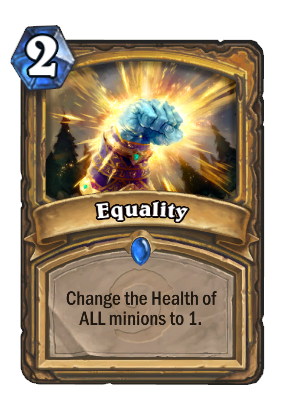

Equality + Wild Pyromancer, or Equality + Consecration
These are two of the best combos in the deck, as they can clear any type of board, no matter how big your opponent’s minions are.
The one with Wild Pyromancer is a bit cheaper, so preferably use it in the first half of the game.
Doomsayer + Solemn Vigil
Play Doomsayer in the early stages of the game, when your opponent has a few minions on board with low attack, so they can’t kill it. Also, press your Hero Power button to increase the number of dead minions on your turn. This will make Solemn Vigil in your hand either very cheap or completely free.
Humility/Aldor Peacekeeper + Stampeding Kodo
If your opponent plays a huge minion with some special effect, such as Ysera, you can use either Humility or Aldor Peacekeeper to set their attack to 1 and then use Stampeding Kodo to immediately destroy it.
General Mulligan
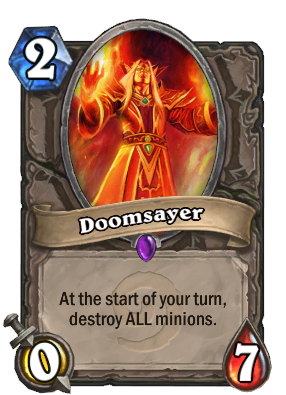
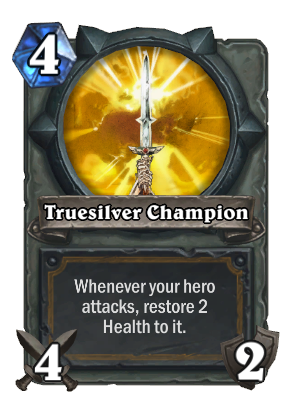
Doomsayer is your most important early removal of the game, especially if you happen to have a Solemn Vigil in your hand.
You can play it even if your opponent has nothing on board – in this way Doomsayer will prevent him from playing anything for another turn, thus giving you more time and overall advantage.
Truesilver Champion is very important to have in your opening hand, especially if you have a Coin. You can quickly deal with a couple of small minions and put your own threats on board.
Acolyte of Pain is just as necessary for the early game, when you need to draw cards and have something on board.
Consecration is better to have against Zoolocks that like to spam hordes of small minions early in the match-up.
Replacements
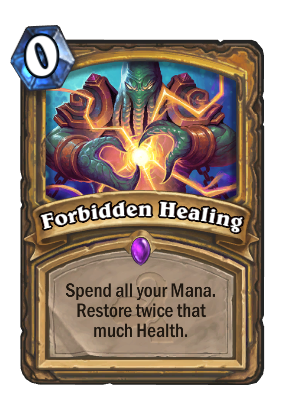
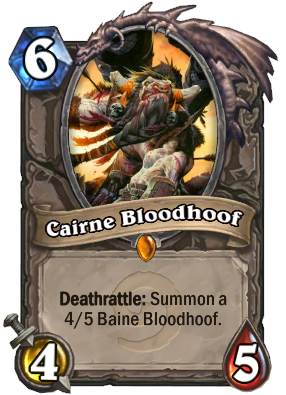
Cards you can’t replace: N’Zoth, the Corruptor, Tirion Fordring, Sylvanas Windrunner, Doomsayer.
Forbidden Healing and Ragnaros, Lightlord are your main healing components — especially Forbidden Healing, which is super effective in the latter part of the game. You can replace them with Lay on Hands and Guardian of Kings, or an even cheaper alternative, such as Holy Light and Cult Apothecary.
Cairne Bloodhoof is a legendary that you may not have in your stash yet, so the decent replacement would be either Corrupted Healbot or Twilight Summoner.
Justicar Truehart is not too important here, so feel free to replace it with some other technical card, such as Eadric the Pure or Faceless Manipulator.
Senjin Shieldmasta and Psych-o-tron are vanilla taunt minions that can be easily dispatched for any other cards with Taunt that you prefer more (for example, Cyclopian Horror).
Wild Decklist

Cost: 11,240
Minions: 18
Spells: 10
Weapons: 2
General Strategy
In Wild format N’Zoth Paladin is even stronger than in its Standard manifestation due to several extremely important deathrattle minions from the Curse of Naxxramas. They are Deathlord and Sludge Belcher – two of the strongest minions with Taunt in the game.
The strategy is similar to the standard deck, but may be a bit faster if you decide to include some Secrets, such as Avenge, and maybe even Dr. Boom. However, N’Zoth will be able to summon only the Boombots, which isn’t a bad deal either.
All the combo pieces and mulligans are the same, except the Muster for Battle, which can give some nice tempo in the early stages of the game, especially if you can combine it with Steward of Darkshire that gives 1-health minions a Divine Shield.
Replacements
Muster for Battle can be easily replaced by Piloted Shredder, which is probably an even better fit for this deck (although a bit slower, so try it out and see for yourself).
Cairne Bloodhoof and Ragnaros, Lightlord can be replaced with Feugen and Stalagg for an even crazier synergy with N’Zoth. Also, it’s much cheaper this way, if you already have the Curse of Naxxramas.
Twilight Summoner can be a bit too weak at times, so you may want to change it to Piloted Sky Golem or Sneed’s Old Shredder.
Match-Ups
vs. Druid
Mulligan: Acolyte of Pain, Equality, Truesilver Champion, Wild Pyromancer
- People mostly play either Ramp Druid or C’Thun Druid these days, so it is important to play as early and as many minions as possible since Druids don’t have good board clears.
- If you happen to stumble upon an Aggro Druid, then make sure you have either Equality or Consecration along with Wild Pyromancer.
vs. Hunter
Mulligan: Doomsayer, Acidic Swamp Ooze, Consecration, Equality, Wild Pyromancer
- Hunters are very aggressive, so you need to have your board clears early.
- More importantly, they have cheap weapons that you want to quickly destroy with your Ooze.
- Playing Doomsayer whenever you can is a good strategy since Hunters strongly rely on their board.
- Most will definitely have Savanna Highmane at the latter part of the match-up, so it’s good to have Aldor Peacekeeper or Humility in your hand.
vs. Mage
Mulligan: Doomsayer, Acolyte of Pain, Truesilver Champion, Consecration
- If you play against Freeze Mage, then Doomsayer is useless. What you want instead is your healing spells and early minions.
- Stampeding Kodo is super important here, as it can deal with Mage’s own Doomsayer and Acolyte of Pain without letting it draw any cards.
- However, you will most likely encounter Tempo archetypes, and this is where Doomsayer will be perfect.
- Also, don’t be afraid to flood the board since most Mages don’t run Flamestrike or just one copy occasionally.
vs. Paladin
Mulligan: Doomsayer, Acidic Swamp Ooze, Acolyte of Pain, Truesilver Champion
- Mirror matches are hard and require a lot of patience. You will need to keep most of your hand and use board clears only when necessary.
- You should be aware of the fact that most likely your opponent will have the same tools as you do, so don’t overextend on the board to avoid full clears.
- Aggro Paladins should be treated like Hunters and Zoolocks, but board clears may not be as effective since they will play a lot of minions with Divine Shield, so keep this in mind.
vs. Priest
Mulligan: Doomsayer, Acolyte of Pain, Solemn Vigil, Stampeding Kodo, Truesilver Champion
- Currently Priests on ladder are either Control with N’Zoth, Dragon or C’Thun variations.
- Keeping board clears early in the game is important and if you can fit in some card draw that would be excellent.
- When your opponent plays Northshire Cleric, your best drop will always be Stampeding Kodo.
- Also, don’t overextend into their own board clears.
vs. Rogue
Mulligan: Doomsayer, Acidic Swamp Ooze, Solemn Vigil, Truesilver Champion
- Rogue players won’t bother clearing your board too much; they will most likely fill up their own side with minions and Conceal them.
- Your biggest chance of winning is exactly Equality + Consecration combo. In this way you will have their board cleared, but your own minions will stay alive.
vs. Shaman
Mulligan: Doomsayer, Forbidden Healing, Aldor Peacekeeper, Solemn Vigil, Truesilver Champion
- Shaman has a lot of early big threats, such as Totem Golem and Flamewreathed Faceless, so Aldor Peacekeepr and Humility become highly valuable in the first part of the match-up.
- Heal whenever you have some presence on board and you should be fine. However, this match-up can still be super hard due to the RNG factor of most Shaman decks.
vs. Warlock
Mulligan: Doomsayer, Equality, Consecration, Wild Pyromancer
- The problem with Zoolock is that it can refill its board almost instantly, so you need to have as many board clears early in the game as you can get.
- In time they will run out of steam, and this is where you can start healing and pushing your own threats to the front.
- Also, keep your Aldor Peacekeeper for that Sea Giant.
vs. Warrior
Mulligan: Acidic Swamp Ooze, Acolyte of Pain, Doomsayer, Solemn Vigil, Stampeding Kodo, Truesilver Champion
- Just like with Priests, here it’s important to keep early control of the board.
- Use Truesilver Champion and Stampeding Kodo against their Acolyte of Pain and Armorsmith.
- If you encounter Patron Warrior, then it is vital to have your board clear combos in hand (e.g. Equality + Wild Pyromancer).
Below is the demonstration of the match-ups against C’Thun Renolock and Classic Zoolock:
Typically, you want to stall the game as long as you can, so when fatigue hits your opponent, you will be the one who will end up with N’Zoth and a board full of minions. Stay patient and carefully remove everything your opponents play until you can strike with a series of hits at the very end.
What do you think about these N’Zoth Control Paladin decks? Which format fits this archetype the best? Share your thoughts in the comments section.

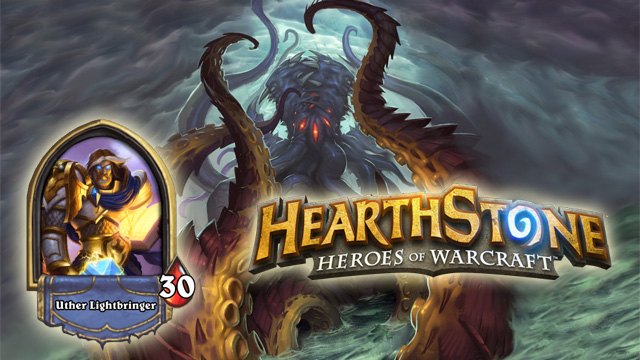
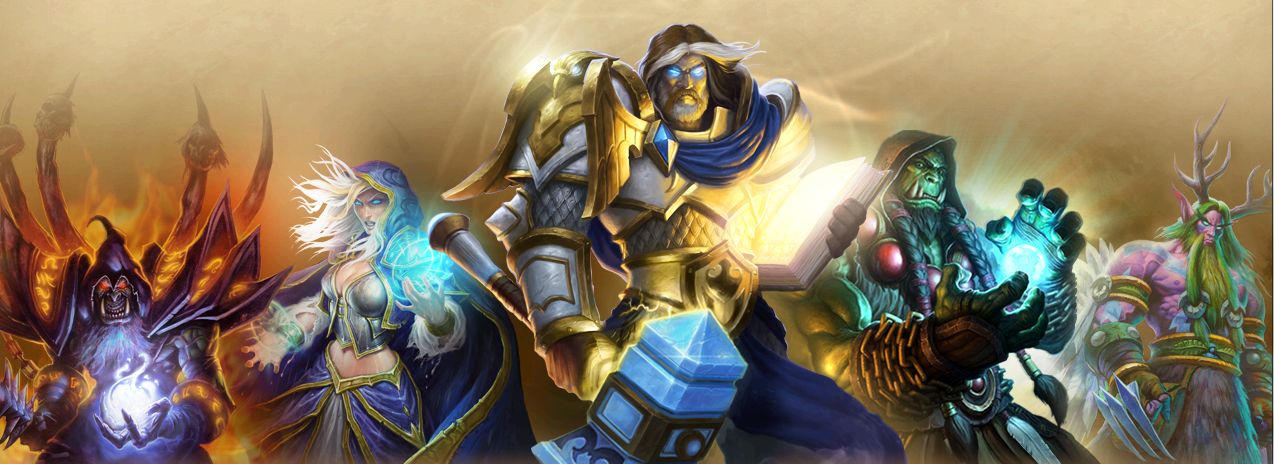





Published: May 12, 2016 12:45 am